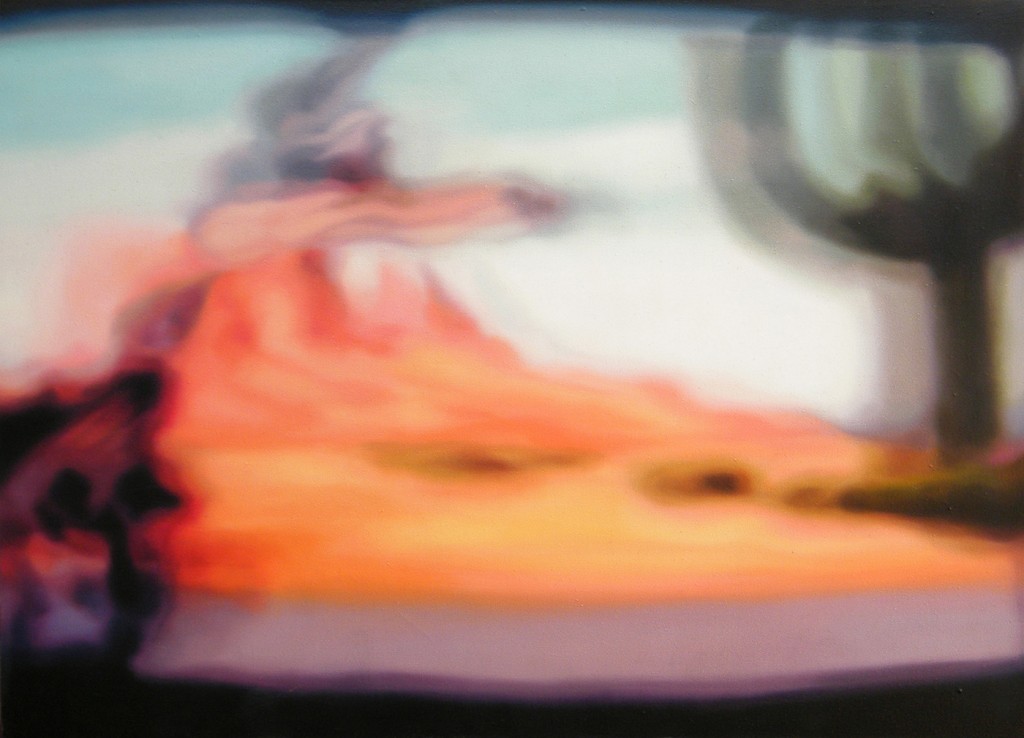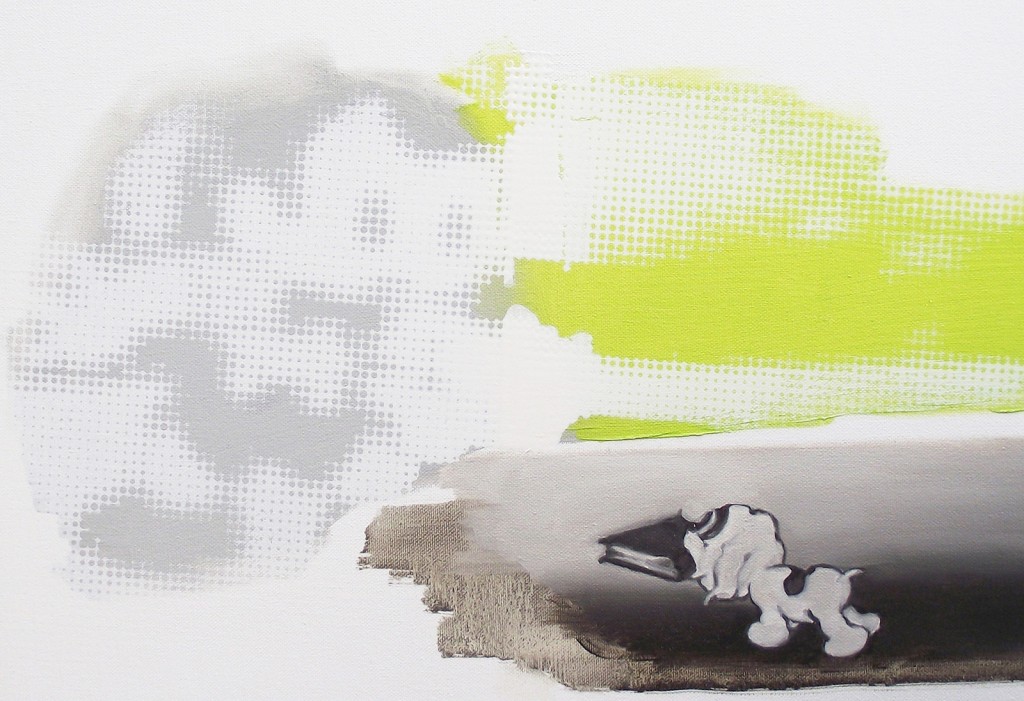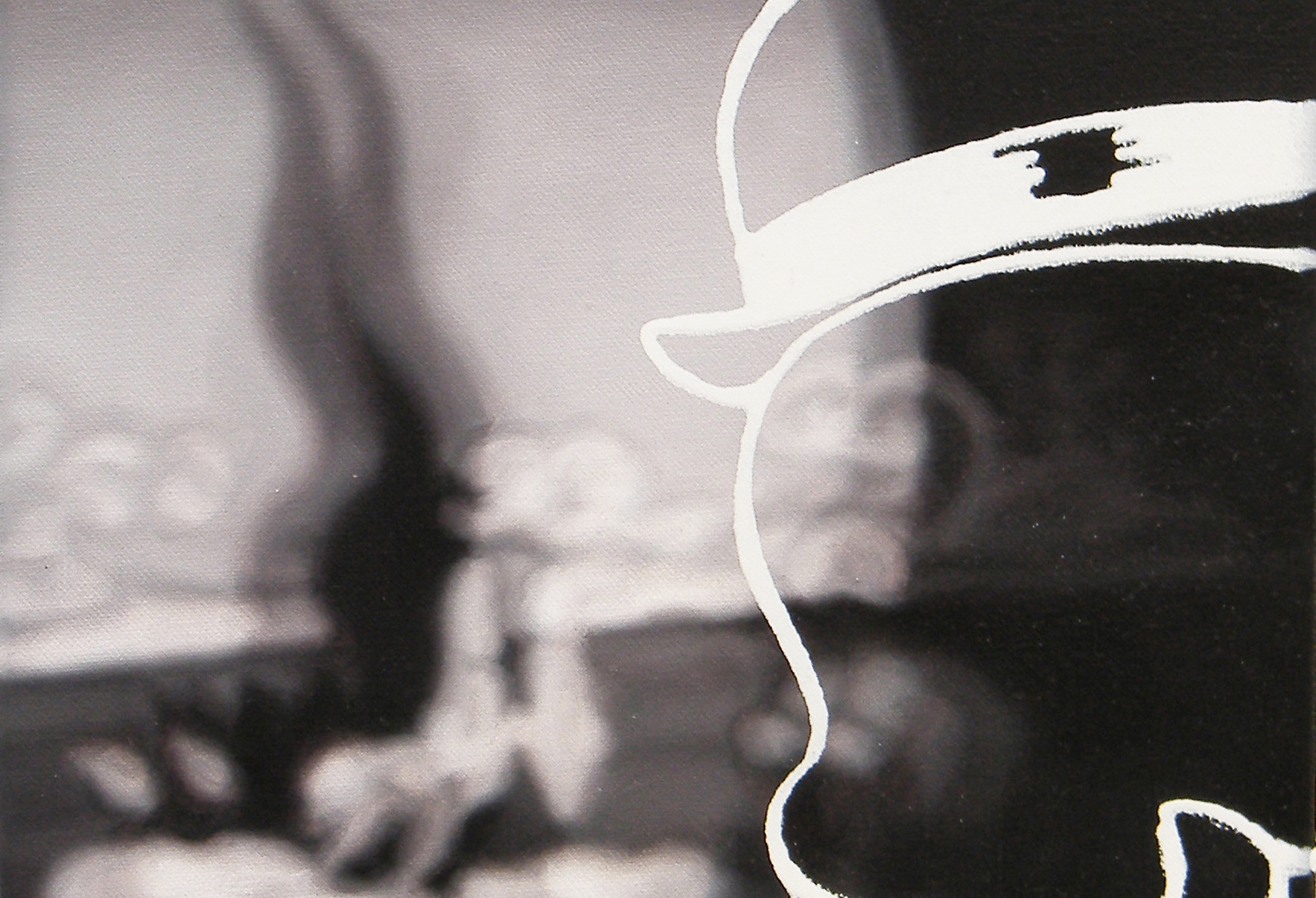In L’Image ouverte1, Georges Didi-Huberman makes a distinction between the « visible » and the « visual ». The author warns against the superficiality of the visible, which attaches a screen to the visual, therefore the viewers are deprived of their own personal projection into the image. The open image rightly illustrates the density of the incarnation of the visual. The visible is only a « disembodied imitation »2.
Marcela Serra’s paintings are part of this ambiguity. The artist proceeds to « an aesthetic rescue of ephemeral images »3 whose raw appearance leads the viewer to believe that they don’t go beyond the visual.
In order to understand these images, the spectators should necessarily reject their visual prejudices. For example, the fuzziness stands for the critical path against the digital images.

Admittedly, in Marcela Serra’s paintings, overexposures, blurrings, pixelizations convey the codes of the digital sphere, however the point in question – of status and the nature of images – emerges from the imprecision of the image.
The digital image is visually represented « in its most frail condition ».4 By reproducing pixelated and damaged pictures, the artist reflects more on « the impact of the image in the media circulation »5, than on pictorial experiences.
The photographic approach in her work freezes realities which she wants to preserve. The erased ephemeral marks carry along the « nostalgic connotation »6 of change. Is this nostalgia peculiar to the dematerialization era ?
By focusing on low value objects, the artist allows us to see common images, which surround human beings daily, in a very different way.

Her visual investigations make her explore the « anecdotal iconography »7 which conveys the group identity. In Marcela Serra’s works, images which are a priori considered as common images, become significant indicators of an epoch.
The artist transforms into poetry what is rejected by the eye. There are no visual wastes, only witnessed-images whose vagueness reveals more than it conceals.
Cécile Gremillet
1. Georges Didi-Huberman, L’image ouverte, Motifs de l’incarnation dans les arts visuels, Gallimard, 2007 2. Véronique Perruchon, Noir. Lumière et théâtralité, Arts du spectacle – Images et sons, Presses Universitaires du Septentrion, 2016, 304 pages 3. Extrait d’un texte écrit par Marcela Serra à propos de son travail, transmis le 19 juillet 2016 4. Ibid. 5. Ibid. 6. Ibid. 7. Ibid.

